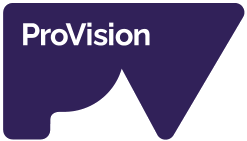
Have you been putting up with strained, tired eyes or persistent headaches while asking yourself “Do I need glasses?”? Our eyes are central to all we do. So, when our vision isn’t functioning at its best, our ability to perform well in other aspects of our lives can be affected.
If you’ve been sitting on the fence about getting your eyes checked and asking yourself “Do I need glasses?” then don’t delay. Vision changes can affect us in every stage of life.
In fact, every 65 minutes an Australian loses part or all of their vision.^ The reality is that you won’t always see early signs of eye disease. Many of the most serious eye diseases develop gradually, often without noticeable signs in their early stages. Only an expert optometrist can see the whole picture, so having an eye examination regularly is essential to stay on top of your eye health.
10 Signs that you need glasses
- Strained eyes? If you’re experiencing persistent strain and eye fatigue, particularly when watching television, working on the computer or reading, it may be a sign of a vision problem, allergies or an undiagnosed health condition.
- Blurry vision? This is a tell-tale sign that our eyes are not working as they should be. Whether it is a common vision problem or a more serious sign of eye damage, it’s important to seek professional advice in the form of an eye examination.
- Squinting? We squint in the effort to reduce the blurriness we experience, by reducing the extra light entering our eyes. Squinting to see clearly is often a sign that we are struggling to see well up-close (long-sightedness, or hyperopia) or far away (short-sightedness, or myopia).
- Headaches? The more our eyes strain to focus without vision correction (particularly in the case of long-sightedness and astigmatism), the more headaches can affect us.
- Dry, itchy, burning or red eyes? There are many things we can do to reduce dry, itchy eye symptoms, when the root cause is identified. Allergens and dry eye are common conditions that can contribute to these sensations.
- Sitting close to the whiteboard, or TV? This is a classic sign of short-sightedness, known as myopia – a condition that is growing in prevalence particularly in children.
- Eye rubbing? Eye rubbing is a common sign of vision problems, especially identified in children. It can increase the more our eyes strain to focus in the absence of vision correction, and can also be related to an infection known as pink eye, or conjunctivitis.
- Reading the menu at arm’s length? This is often the first sign of presbyopia, a natural loss of near focusing ability that occurs with age.
- Struggling to see in low light or at night? Difficulty seeing in darker conditions can be an indicator of cataracts or other eye conditions.
- Neck/shoulder/back pain? Sitting in front of digital devices for more than 2 consecutive hours can put a strain, not just on our eyes, but also on our posture, as we lean toward our screens and/or slouch in our chairs.
Learn about the common vision problems and eye conditions that can affect us at various ages and stages of life.
Don’t put up with poor vision – Book an eye test today.
A 30-minute eye test could make a world of difference to your every day – it could even save your sight. Our optometrists are passionate about helping you achieve healthy sight over your lifetime, and it begins with a thorough eye examination.
Find your nearest optometrist now^Ranzco Eye Foundation


